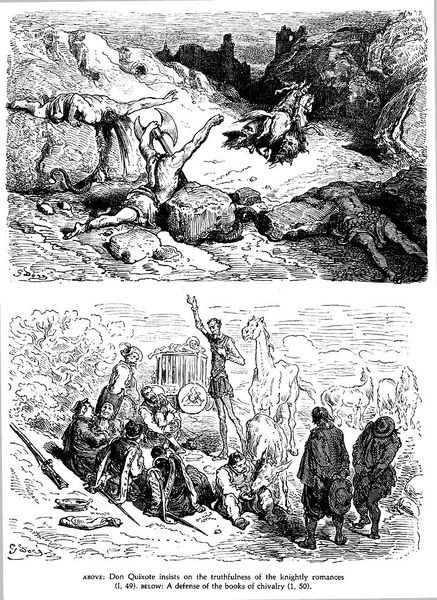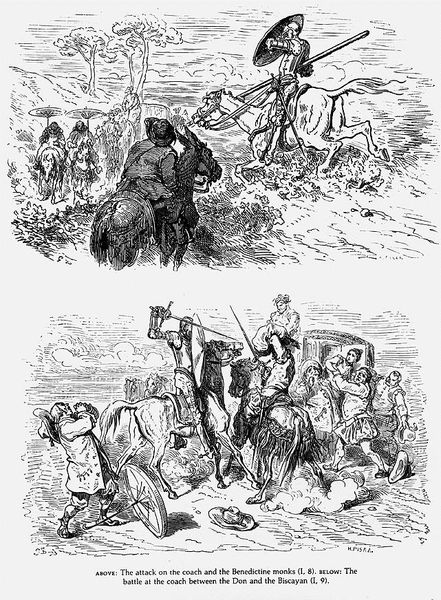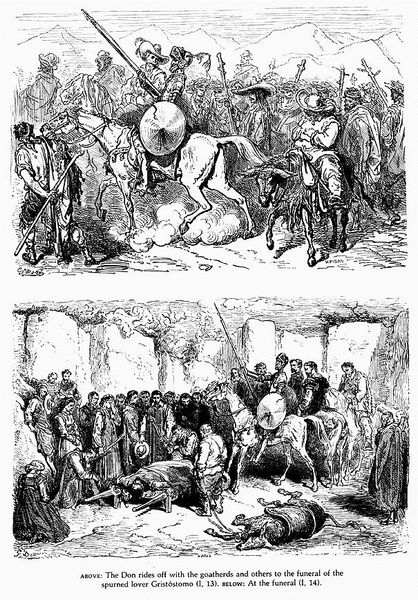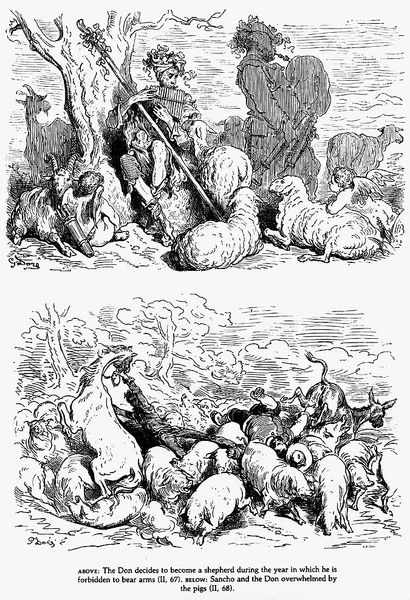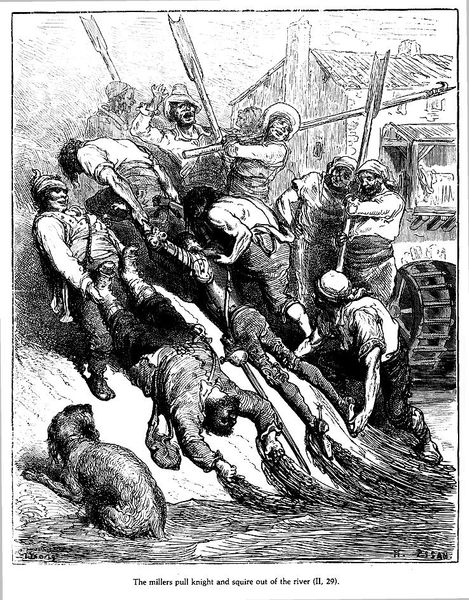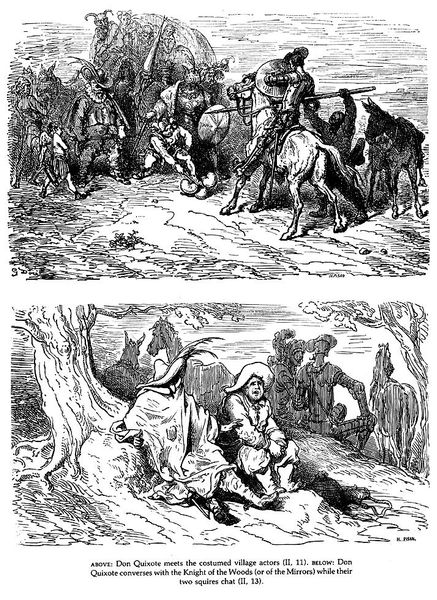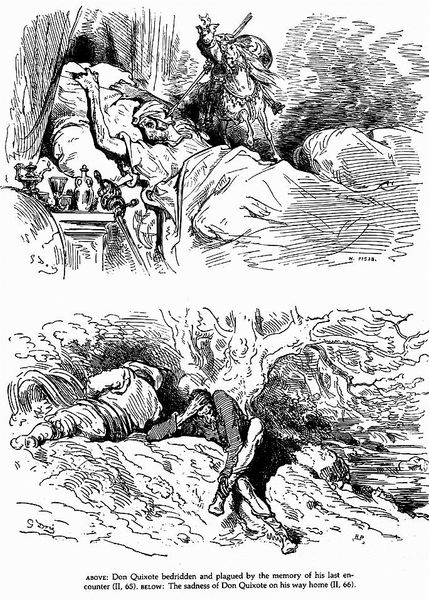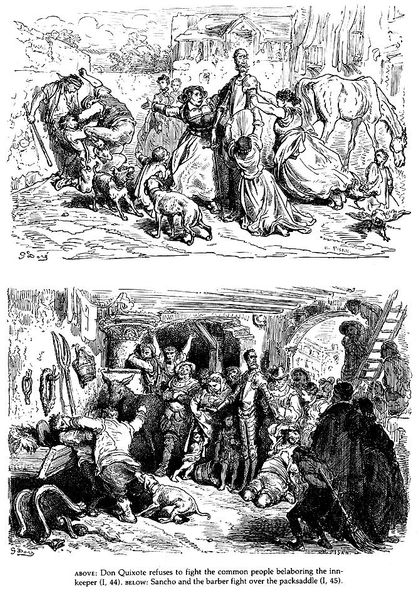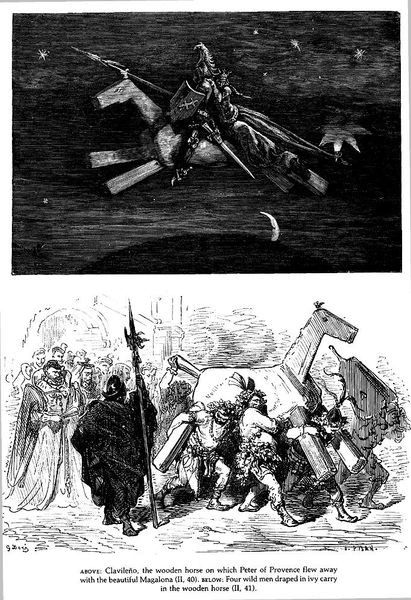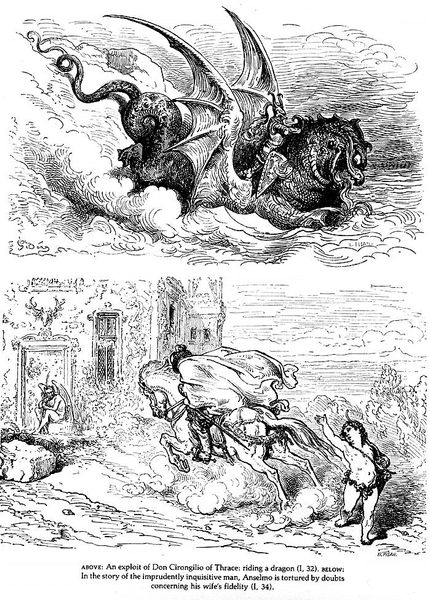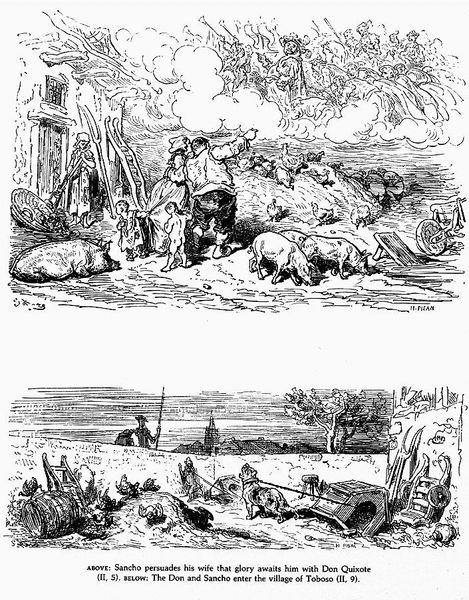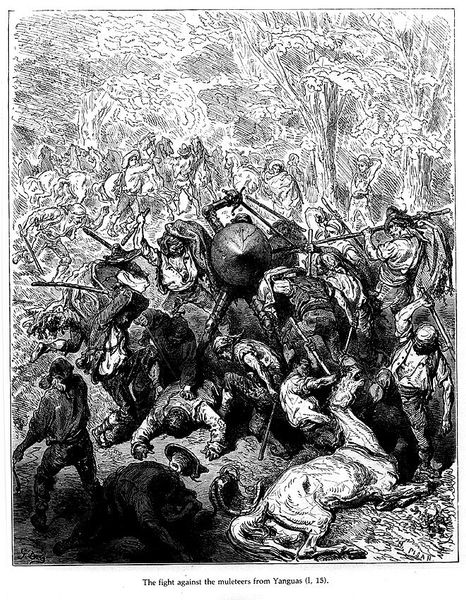
drawing, paper, ink, engraving
#
drawing
#
medieval
#
narrative-art
#
animal
#
landscape
#
figuration
#
paper
#
ink
#
folk-art
#
romanticism
#
horse
#
history-painting
#
engraving
#
story boarding
Copyright: Public domain
Gustave Dore produced this pen and ink illustration of Don Quixote sometime in the mid-19th century. It encapsulates the essence of Miguel de Cervantes' novel, a foundational text that both celebrates and satirizes the ideals of chivalry. Consider how the image creates meaning through visual codes. In the upper panel, we see Sancho Panza and his donkey sprawled amidst ruins, a scene of undignified collapse that punctures any romantic notions. Below, Don Quixote is locked in combat, an absurd figure in his makeshift armor. Dore, working in France, taps into a deep vein of cultural references to Spain's Golden Age, a period of imperial power and artistic flourishing. But by the 19th century, these references had become tinged with irony, as European society grappled with modernity. To fully understand Dore's illustration, we must consider its place within the burgeoning print culture of the 19th century. Art historians often consult archives of publishers' records to better understand the original context and reception of images like these. These sources help us understand the role of art in shaping public opinion.
Comments
No comments
Be the first to comment and join the conversation on the ultimate creative platform.
